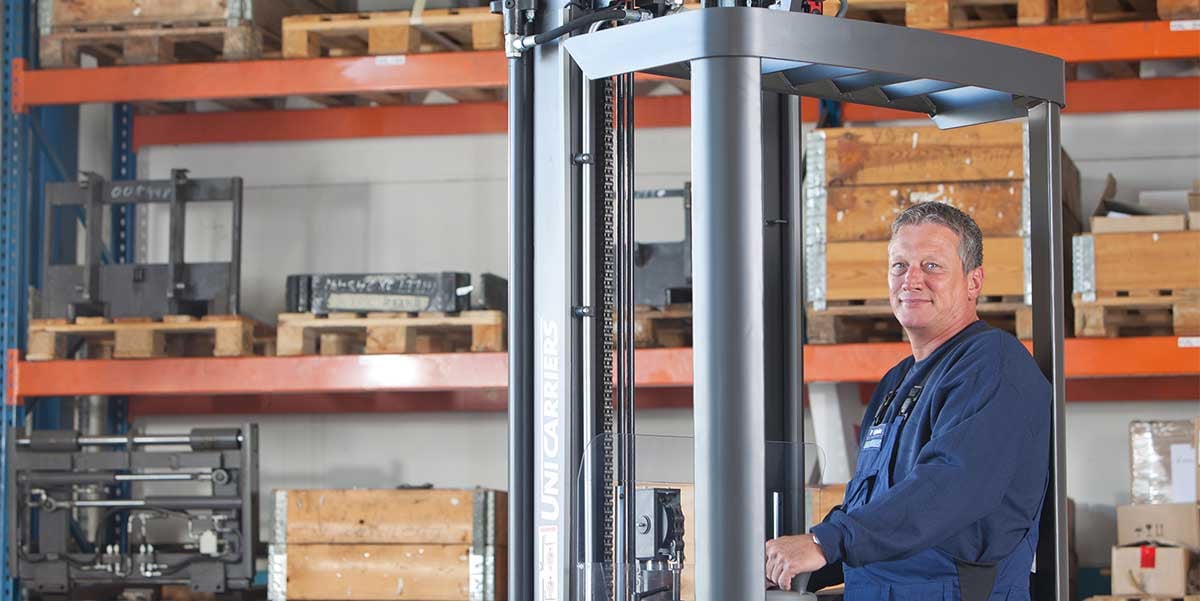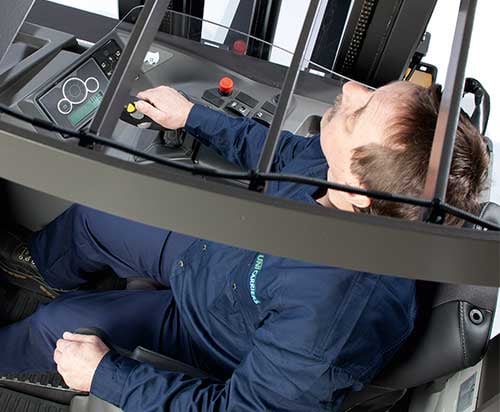
Operating a forklift is a demanding job, and the stresses of a busy materials handling operation can put strain on drivers. This doesn't only make them uncomfortable and prone to injury, but also makes them less efficient and productive, harming the operation's bottom line.
Fortunately, the physical challenges of logistics work can be made much easier with the help of ergonomic design — not only does it make the job much safer and more comfortable for drivers, but also increases overall productivity. Let's take a look at the main causes of strain and injury in the warehouse, and how they can be mitigated with ergonomics.
Vibrations
The vibrations that the driver can experience when the truck is driving can be hazardous. Vibration injuries can occur in the fingers, hands and arms of those who regularly work with vibrating tools, but forklift vibrations affect the whole body, and have been shown to cause lower back pain in seated drivers. Truck-related factors such as quality seat suspension and driving speed can help reduce vibrations, but the driving surface is one of the most important factors – rough and uneven floors cause the most vibrations, and negatively affect drivers and their productivity. Ergonomic trucks are great, but ergonomic design is vital across the whole warehouse.
Constant movements
Research carried out by UniCarriers and Gothenburg’s Chalmers University of Technology has show that forklift drivers turn their heads more than 1,000 times an hour during a shift, and make up to 2,000 arm movements in the same period. Over time, all this movement can take a toll on the body, especially if the truck is poorly designed. A truck which makes these movements as small and strain-free as possible will help reduce these risks.
Unnatural posture

Operating a truck for long periods in a position that is not relaxed and natural can become difficult for the driver. Even reaching slightly forward with the left arm to reach the steering wheel on a reach truck can quickly cause discomfort in the arm and shoulder.
The truck’s design should allow the driver to operate it with a relaxed, neutral posture. Not only does this protect the driver, but prevents fatigue occurring during the shift, helping productivity stays high.
Poor visibility
Poor visibility from the driver’s seat can be problematic for two reasons. Firstly, it increases the risk of collisions and accidents. Research shows that a third of all forklift impact accidents occur when the truck is reversing – how many of these could be avoided if the driver had a better view all around the truck? Secondly, poor visibility forces the driver to move around in order to look around pillars, hydraulic hoses or the mast. As we know, this constant movement can lead to strain injuries over time, so it’s better to ensure that the driver can get a good view while also maintaining a neutral posture.
If you're interested in finding out more about ergonomic design in forklifts, and how it can not only increase staff satisfaction but boost your bottom line, click the button below - there's a free PDF guide on The Importance of Ergonomics in Material Handling waiting for you.






































Comment